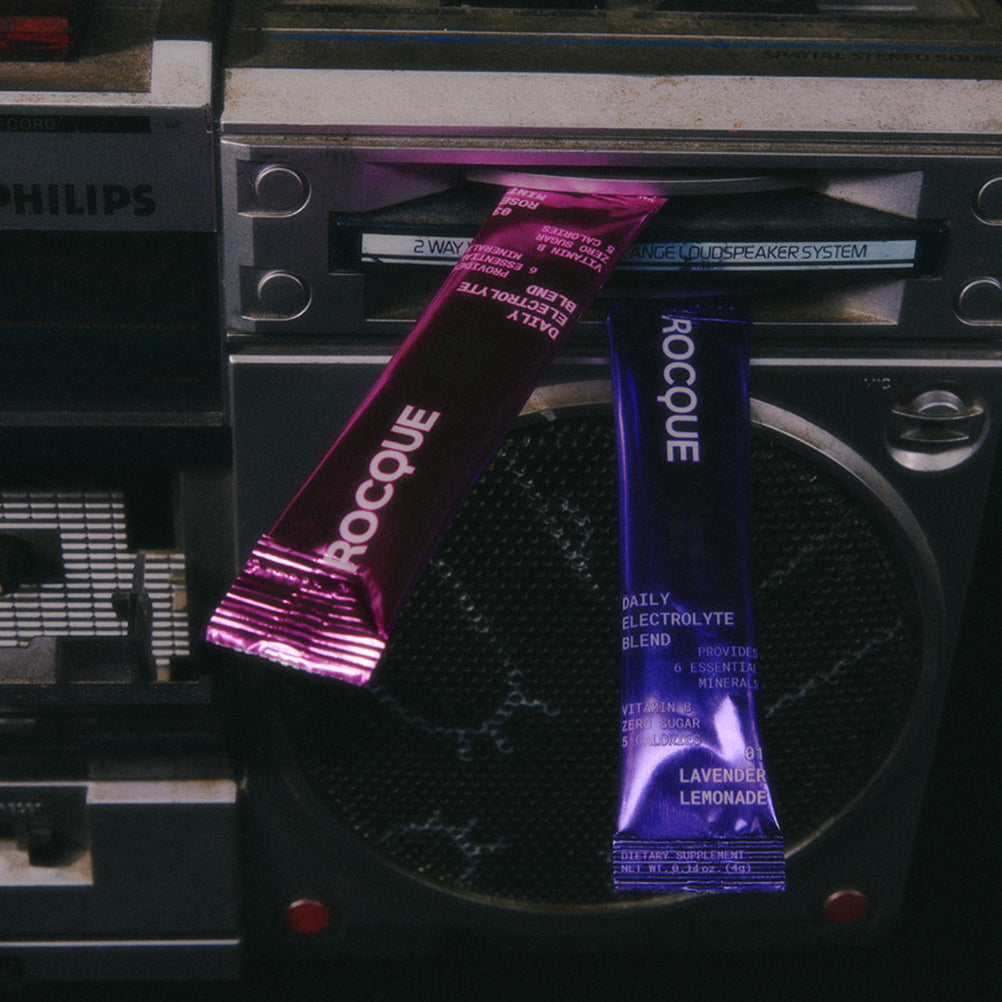Introduction
Do you ever hit an energy slump in the afternoon or feel your stamina dip mid-workout? The solution might not be more caffeine—it could be electrolyte balance. Electrolytes like sodium, potassium, magnesium, and calcium are not just for hydration—they are key players in your body’s ability to generate and sustain energy. Here’s how these minerals help power your day.
How Your Body Produces Energy (ATP)
The body’s primary energy currency is ATP (adenosine triphosphate), created through:
-
Aerobic respiration: Combines oxygen with glucose or fat to produce ATP efficiently (Berg et al., 2015).
-
Anaerobic glycolysis: Generates quick ATP without oxygen, common during intense exercise (Robergs et al., 2004).
-
Phosphocreatine system: Delivers rapid bursts of energy for short efforts like sprints (Casey et al., 1996).
These processes all rely on electrolytes to function properly.
Electrolytes: The Missing Link in Energy Metabolism
1. Magnesium: The Enzyme Activator
Magnesium is essential for over 300 enzymatic reactions, including the Krebs cycle, a critical phase of aerobic respiration (de Baaij et al., 2015). Without magnesium, ATP production becomes inefficient, leading to early fatigue.
2. Sodium and Potassium: The Signal Managers
Sodium and potassium regulate nerve impulses and muscle contractions (Aidley, 1998). They maintain the sodium-potassium pump, which enables cellular communication and efficient glucose transport—the fuel needed to create energy (Wright et al., 2011).
3. Calcium: The Muscle Driver
Calcium triggers muscle contraction and energy release within muscle fibers. When calcium is depleted, physical performance and endurance can quickly drop (Allen et al., 2008).
4. Hydration and Nutrient Transport
Electrolytes regulate fluid balance, which is essential for delivering glucose and oxygen to cells and clearing metabolic waste (Adrogué & Madias, 2000; Sawka et al., 2007). Even slight dehydration can impair performance.
Why Energy Crashes Happen
Afternoon slumps and training fatigue often stem from:
-
Mild dehydration
-
Electrolyte depletion
-
Inadequate nutrient absorption
These disrupt ATP production, slow down nerve signals, and impair muscle function. Caffeine masks the symptoms—but electrolytes treat the root cause.
Rocque Electrolyte Blend: Designed for Daily Energy
Rocque’s sugar-free electrolyte formula supports:
-
Efficient glucose transport (sodium)
-
Optimal muscle and nerve activity (potassium, calcium)
-
Cellular energy production (magnesium)
-
Hydration for sustained energy
By replenishing these key minerals, Rocque helps you avoid crashes, stay focused, and maintain endurance throughout the day.
Conclusion
Electrolytes aren’t just for post-workout recovery—they’re fundamental to how your body makes and maintains energy. From ATP production to nerve signaling and hydration, these minerals help fuel your performance and focus. Whether you’re powering through a workout or a long workday, staying in electrolyte balance—through a clean solution like Rocque—can help you feel your best.
References
-
Adrogué, H. J., & Madias, N. E. (2000). Sodium and water in health and disease. The New England Journal of Medicine, 342(15), 1098–1109.
-
Aidley, D. J. (1998). The Physiology of Excitable Cells. Cambridge University Press.
-
Allen, D. G., Lamb, G. D., & Westerblad, H. (2008). Skeletal muscle fatigue: cellular mechanisms. Physiological Reviews, 88(1), 287–331.
-
Berg, J. M., Tymoczko, J. L., & Stryer, L. (2015). Biochemistry. WH Freeman.
-
Casey, A., Constantin-Teodosiu, D., Howell, S., Hultman, E., & Greenhaff, P. L. (1996). Creatine ingestion favorably affects performance and muscle metabolism. Am. J. Physiol. Endocrinol. Metab., 271(1), E31–E37.
-
de Baaij, J. H. F., Hoenderop, J. G. J., & Bindels, R. J. M. (2015). Magnesium in man: implications for health and disease. Physiological Reviews, 95(1), 1–46.
-
Knochel, J. P. (1977). Role of potassium in exercise-induced muscle damage. Sports Medicine, 4(4), 251–261.
-
Lederer, W. J., & Boron, W. F. (2018). Transport of ions across sarcolemma. Comprehensive Physiology, 8(2), 769.
-
Robergs, R. A., Ghiasvand, F., & Parker, D. (2004). Metabolic acidosis in exercise. Am. J. Physiol. Regul. Integr. Comp. Physiol., 287(3), R502–R516.
-
Rude, R. K. (2012). Magnesium. Advances in Nutrition, 3(6), 761–763.
-
Sawka, M. N., Burke, L. M., Eichner, E. R., Maughan, R. J., Montain, S. J., & Stachenfeld, N. S. (2007). ACSM Position Stand: Fluid replacement. Med. Sci. Sports Exerc., 39(2), 377.
-
Shirreffs, S. M., Armstrong, L. E., & Cheuvront, S. N. (2006). Fluid and electrolyte needs. Journal of Sports Sciences, 24(7), 699–707.
-
Wright, E. M., Loo, D. D. F., & Hirayama, B. A. (2011). Sodium glucose transporters. Physiological Reviews, 91(3), 733–794.




